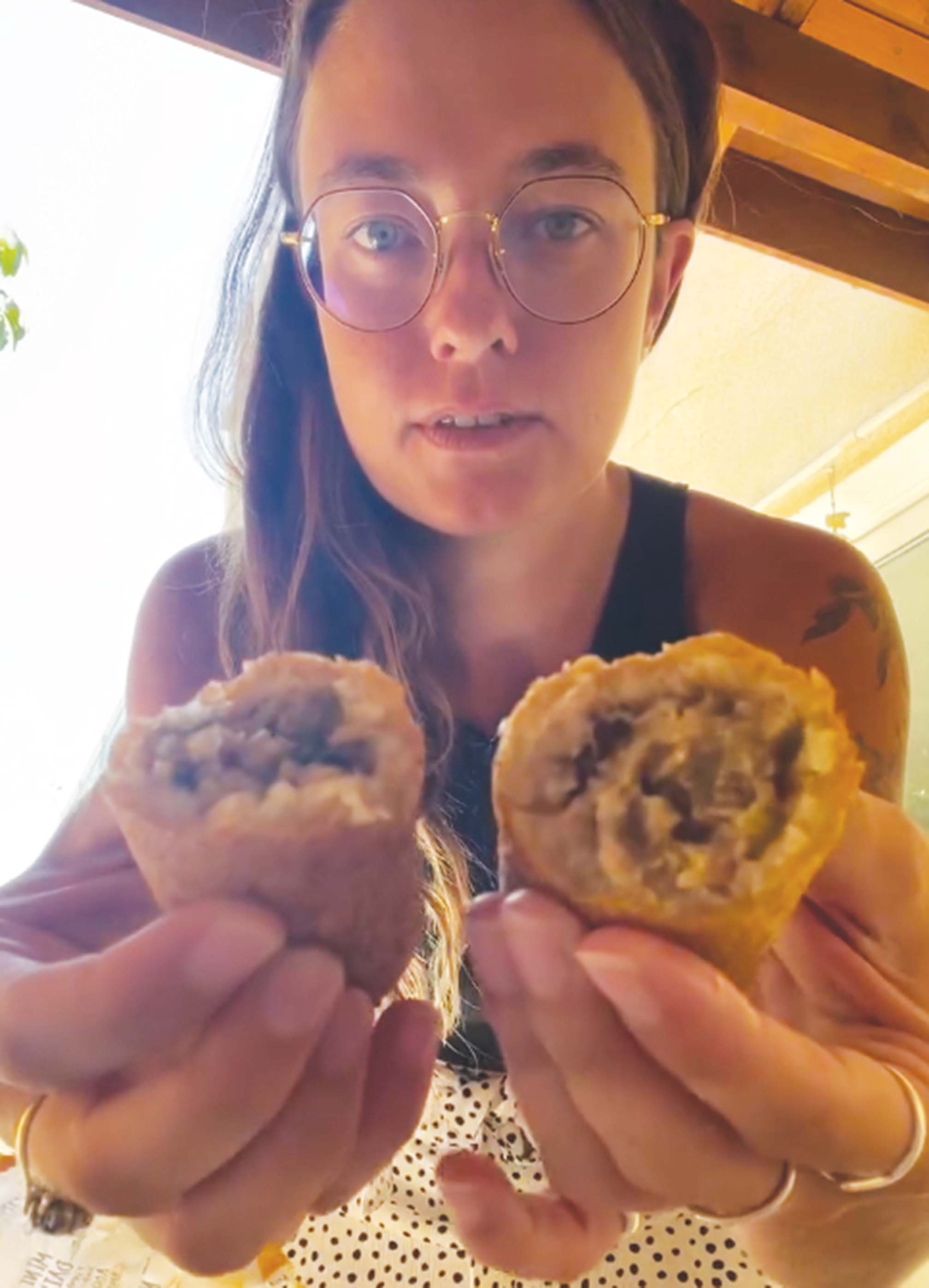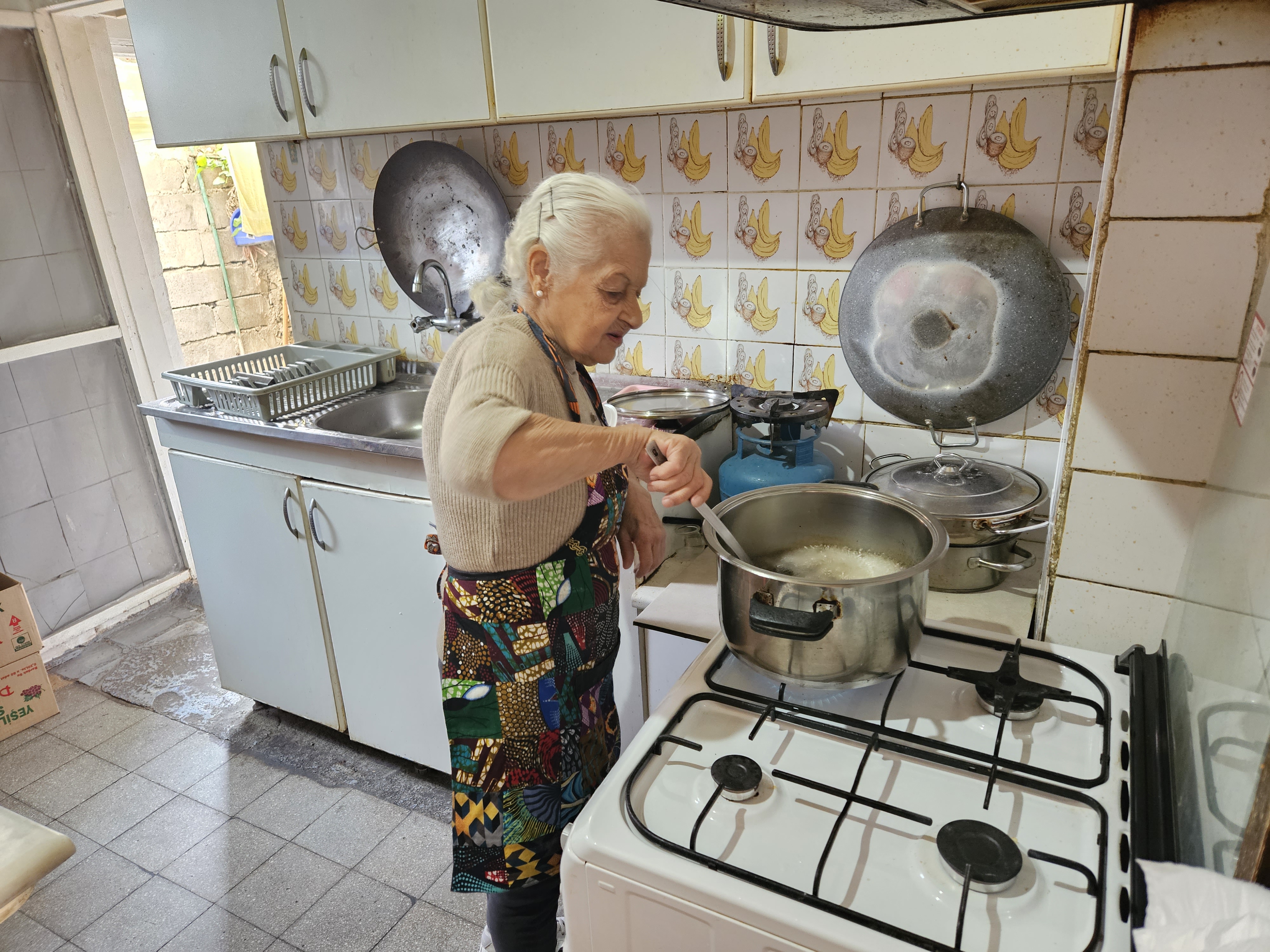A traditional Cyprus snack is having a moment – possibly becoming a protected product, but not before you’ve tried it with ice cream
The koupa (plural, koupes) is having a moment. Earlier this month, a campaign was launched to add it to the EU’s PGI (Protected Geographical Indications) register as a traditional Cyprus product.
Meanwhile, on TikTok, ‘Koupes Taste Test’ videos – especially on the so-called alternative koupes from Mitsero, on which more later – are getting serious views and even more serious discussion by koupes enthusiasts. “There’s an old lady in Lefkara that runs a kafenio. Her koupes are [star eyes emoji],” goes one recommendation. “If you eat them without a drop of lemon, it’s not a koupa,” chides another expert.
Wait, though; what is a koupa? They’re “delicious bakery snacks,” says Holly Manning (@hollydays.cy on TikTok and Instagram), a Limassol-based British expat behind the videos.
“A meat and herb filling with a bready crust,” she explains, “deep fried, creating a moist and flavourful savoury centre with a scrummy, soft yet crunchy outer shell.”

Koupes are indeed pretty scrummy – and hard to get wrong, which is not to say all koupes are created equal.
The minced meat – flecked with onion and parsley – should be fragrant and firm, not too oily. The bulgur-wheat shell should be crunchy, even when it cools (koupes are best eaten fresh, of course). An intrepid researcher on a koupes jaunt might discover quite a variety – some even swap the meat for soya – though they’d also have to pace themselves, to avoid heartburn. It’s a deep-fried food, after all.
The koupa is versatile, both snack and treat. Koupes are presented on namedays and laid out at weddings – but also scarfed down for daily sustenance. Some of her best customers are the “boys” (construction workers) who work in the area, says the motherly Chrysa of Snack Bar Chrysa in Nicosia, who gets her koupes from the fabled Psillos in Derynia. Two large koupes for a fiver – she’ll throw in some chips on the house – make a full meal.
Koupes are ubiquitous in Cyprus, and very Cypriot. “I’ve had kalamarades [mainland Greeks] buy some to take back to Greece with them,” says Chrysa.
That said, getting the PGI approval might be a challenge. Most of the Middle East makes variations on koupes, though for instance the Lebanese version is smaller and rounder. The tube-shaped koupa seems to be our own special thing – but even that is due to the modern equipment used to mould the shell, not because it’s traditional.
It’s also, of course, not uniquely Greek Cypriot: bulgur kofte – the Turkish Cypriot version – is identical, only with the pork replaced by lamb.
Any koupes-hunting expedition should include the tiny shop owned by Turkan Ozkeser and her husband Memduh in the north, close to the Ledra Street checkpoint. Turkan was born in 1940, Memduh in 1935. She’s been making bulgur kofte for 24 years – though the business got a boost when the checkpoints opened, as the couple grew up in the south (they’re from Ayia Anna, near Larnaca) and still speak reasonable Greek.

The business is notable for how modest it is. The elderly couple live behind the shop, which is really just their old living room outfitted with a few tables and a fridge plastered with photos of their grandchildren. Turkan makes bulgur kofte about once a week – the shell is just bulgur wheat, water and salt – freezes them, then fries to order.
I arrive around 1pm on a Friday and place my order, five bulgur kofte for €10. Memduh chats in Greek about politics, then admits I’m their first customer of the day. Do they even make money? “Eh, what should we make?” he shrugs with an 89-year-old’s nonchalance. “Look, instead of keeping the door shut, we open it – and whatever happens.”
This is the koupa (or bulgur kofte) at its simplest, the most basic of staples. Cross the Green Line, however, travel southwest for about 40 minutes – where the first low hills and pine trees start to appear – and you’ll find the village of Mitsero, fast becoming a hub for creative, Instagrammable koupes.
“The best koupes I have tried are indeed those in Mitsero,” says Holly, who made the Georgios Andreou Supermarket – and its Saturday-morning koupa-fest known as Mitseroupolis – the subject of her most popular taste-test video, which went viral back in July. “I understand that the shop in Mitsero was overrun with orders the following weekend after the videos were released, even including orders from Dubai.”
Sounds impressive – though actually Sotiris Andreou, who runs the store with his brother Andreas (Georgios is their dad), takes it in his stride.
They get people from all over, he says over a plate of koupes – having methodically squeezed lemon over every chunk – outside the supermarket. “They’ll come to Cyprus on vacation and come to Mitsero, because they’ve heard about the koupes at Mitseroupolis. Almost every Saturday we have people from different countries.”
Many are diaspora Cypriots craving traditional fast-food, hailing “from Australia, USA, Britain. From Kuwait, they came one time. South Africa.…” There is, however, a catch – because the koupes made by Sotiris and his team at Mitsero are not your grandmother’s koupes.
We should note, at this point, that 39-year-old Sotiris has an entrepreneurial mind. Thus, for instance, during Covid, his supermarket was the first to deliver groceries in Nicosia – even before the supermarkets actually in Nicosia. “We were the first, from the first day.” He recalls watching the news in March 2020, when lockdown was declared – and, where everyone else saw a crisis, he saw an opportunity.
Eleven months ago, knowing nothing at all about koupes, he decided to start making koupes (working with a baker called Marina, who’s in charge of actually cooking them). The classic, minced-meat koupa came first, and went over well – but then Sotiris, ever ready to experiment, asked himself “why not try other combinations?”.
It’s a question someone else should’ve asked already, given how long we’ve been making koupes – but perhaps that’s why the snack is so Cypriot, because it reflects Cypriots’ conservatism. (Put that on the PGI application!) “All these years – I don’t know why – no-one dared to make a variation,” shrugs Sotiris, even though (a) the tube can be filled with just about anything, and (b) bulgur wheat is a popular accompaniment to many dishes, especially in the villages.
Spinach and feta came first, then loukaniko (village sausage, made in-house) with halloumi. Other fillings followed, bringing social-media success in their wake. Pulled pork, a natural fit with bulgur. Gyros and tzatziki, an even more natural fit. Mozzarella and pesto, what he calls a “pizza koupa”. Olive. Shish kebab. Chicken. Lamb and potato. Mushroom.
Then came the ultimate heresy: sweet koupes, filled with “Nutella, Bueno, pistachio, and other variations with vanilla and strawberry”. Bulgur wheat and chocolate doesn’t exactly sound like a natural combo. “I know,” he chuckles, “that’s why I spent six months trying to convince myself to try it!”
It sounds a bit gross, yet it works. “I won’t be surprised if a sweet pistachio koupa with homemade ice cream is the next dessert highlight in our concept Cypriot restaurants (or tavernas!) soon,” enthuses Holly.
The quality of the bulgur makes a difference with the sweet ones, explains Sotiris: they grind it finely, so its consistency becomes more like pie dough – then serve the koupa warm, with ice cream. Saturday visitors tend to be a bit wary (koupes are available every day, but Saturday is the big blow-out), but usually end up liking them.

All good fun – yet there may be a lesson here too. Visitors always rave about Cyprus food, at least if they avoid the obvious tourist traps – yet our food culture tends to be static, unadventurous. Tavernas always serve the same dishes. Staples are unchanged, just like koupes stayed the same for generations. Even this PGI application is a mixed blessing; if we get EU approval, will some bureaucrat come to Mitsero and tell Sotiris he can no longer call his creations ‘koupes’?
Obviously, it should be the opposite. Diversity is good for koupes, as it is for most things. Fortunately, judging by the comments on Holly’s videos, it seems that uniformity hasn’t (yet) ruined the noble koupa, with viewers fervently recommending this or that favourite.
Holly herself likes the versions made by Sigma bakery – “they are the best koupes I have tried from a commercial chain bakery” – and Mario’s Snacks in Limassol, in addition to those in Mitsero.
Other cities have also chimed in: Andreas Snacks in Paphos and Alasia Café in Larnaca, according to residents of those respective places. The aforementioned Psillos in Derynia is apparently a master, for koupes devotees in the Famagusta district. Nicosians, meanwhile, tend to rave about Vicky (last name unknown) who makes flavour-packed koupes to order and operates from an unmarked workshop near Achilleas Kaimakli. Those who know, know.
One thing’s for sure: there has never been a better time to be making koupes. The social-media fame appears to have raised their profile, says Sotiris genially, meanwhile making plans for new flavours (afelia are an obvious choice, since they’re always served with bulgur wheat anyway). The snack was previously “marginalised” – but now koupes-makers are coming out of the woodwork, advertising their wares.
“I’ve done my little bit to promote koupes generally, as a product,” he concludes with a smile. Koupes are on fire – just in time for the PGI application, too. To paraphrase the Don, make koupes great again.


